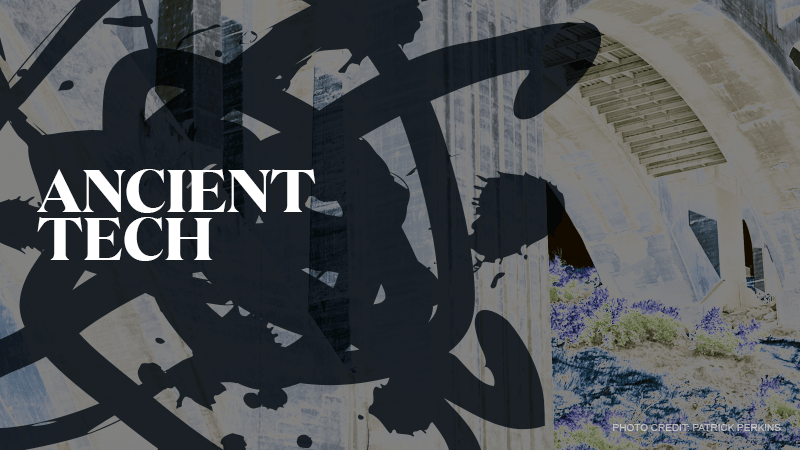When you think of technology, you probably think of smart phones, laptops, drones, and other modern wonders. However, technology dates back as far as humanity. The discovery of fire was a technological advancement, for instance. Technology is “the application of scientific knowledge to the practical aims of human life,” according to Brittanica, and this involves so much more than we often think about.
It can be difficult to remember just how far we’ve come as a society, especially because technological advancements grow exponentially — for example, computer speed has been [doubling each year] since the 1960s. There are less than fifty years between the invention of the television and sending a man to the surface of the moon. We can be forgiven for not looking back to the roots of technology, but it’s always important to remember where we came from and take the time to admire exactly what our ancient ancestors did with what they had. Here are some pieces of ancient technology you may have forgotten about.

Aqueducts
Fresh, running water that travels through empires and keeps waste out of cities feels less like a relic of the ancient past and more like a modern marvel. In actuality, ancient people had already devised a system to distribute clean water throughout their cities. The aqueduct was an impressive feat of engineering for the time, used by early Egyptian and Indian civilizations before being improved upon by the Romans. Engineers used gravity and natural land curves to help channel lake and spring water through a series of tunnels, bridges, pipes, and canals. This wasn’t a small feat — within the crowded city of Rome itself, 300 million gallons of water would pump through daily, keeping the Roman empire running efficiently. This water was used for everything from drinking and bathing to farming and mining. The Roman aqueducts were constructed over a period of about 500 years, between 312 B.C.E. to 226 C.E. A “newer” aqueduct built in 19 B.C.E. still supplies the Trevi fountain in the heart of Rome today.

Wax Tablets
Before the ubiquitous notebook and pencil, chalkboard and eraser, or Google doc, ancient civilizations came up with a way to write down important information — and then erase it. The wax tablet was an incredibly useful invention, helpful for note-taking, bookkeeping, school lessons, and more, and dates back to the 7th century B.C.E. in Italy. The wax tablet was a wooden board covered with a thick coating of beeswax, sometimes linked together with other tablets to create a sort of notebook. It was used in conjunction with a stylus, an instrument crafted out of wood, metal, or bone. The sharp end of the stylus would scratch into the wax, which was sometimes treated with a coating of soot so that the etched-in letters would show through more clearly. Its blunt end on the other side would erase the letters with heat (by heating either the tablet or the stylus itself, although this only worked with metal styli), rendering the wax tablet endlessly reusable.

Steam Engines
You could be forgiven for imagining the steam engine as a Victorian-era invention, a key player in the Industrial Revolution and modernity. In actuality, ancient civilizations were hypothesizing steam engine technology as early as the 1st century C.E. It’s described in a text by engineer Heron of Alexandria, although it was not put to use at this time. There are also records of an in-use steam-powered church organ in 1125, and Leonardo Da Vinci designed a steam-powered cannon called the Architonnerre.

Concrete
When you think of concrete, you probably think of bustling paved highways in modern cities. Today’s concrete is made of cement, stone, sand, and water. However, its initial forms date back to [1300 B.C.E.], when ancient Middle Eastern architects discovered that coating their clay homes in limestone created a chemical reaction that hardened and fortified the buildings. This is considered the earliest form of cement. Concrete itself dates back to around 650 B.C.E. in Jordan, used by Nabatean traders to help them live in harsh desert climes. A few hundred years later in 125 B.C.E., the Romans built the Pantheon, whose 142-foot wide dome is made of concrete.

Pyramids
Did you know that Cleopatra actually lived closer to the invention of the iPhone than she did to the building of the pyramids? That’s how ancient the impressive technology they used to build these lasting structures is! The Pyramids of Giza were built between 2550 B.C.E. and 2490 B.C.E., using a staggering 5.5 million tonnes of limestone, 8,000 tonnes of granite, and 500,000 tonnes of mortar in their construction. Much of the material was local, but some of it was actually important via boats that traveled down the Nile, some coming from as far as nearly 600 miles away.
It can be easy to overlook the immensely impressive feats of our fore-bearers, but it’s important to remember that technology isn’t just a modern concept or implementation. Ancient civilizations were building and creating and utilizing innovative resources just as much as we do now — and a lot of it is still standing! We only know of these technological advancements because of their lasting impact on society, and their remarkable preservation (think of the Pyramid of Giza, or the Pantheon, or the Roman aqueducts, all of which you can still visit today). So the next time you’re sending a text or driving your electric car, remember the engineers and architects who helped us get to where we are today.





Comments
This was so informative thanks!